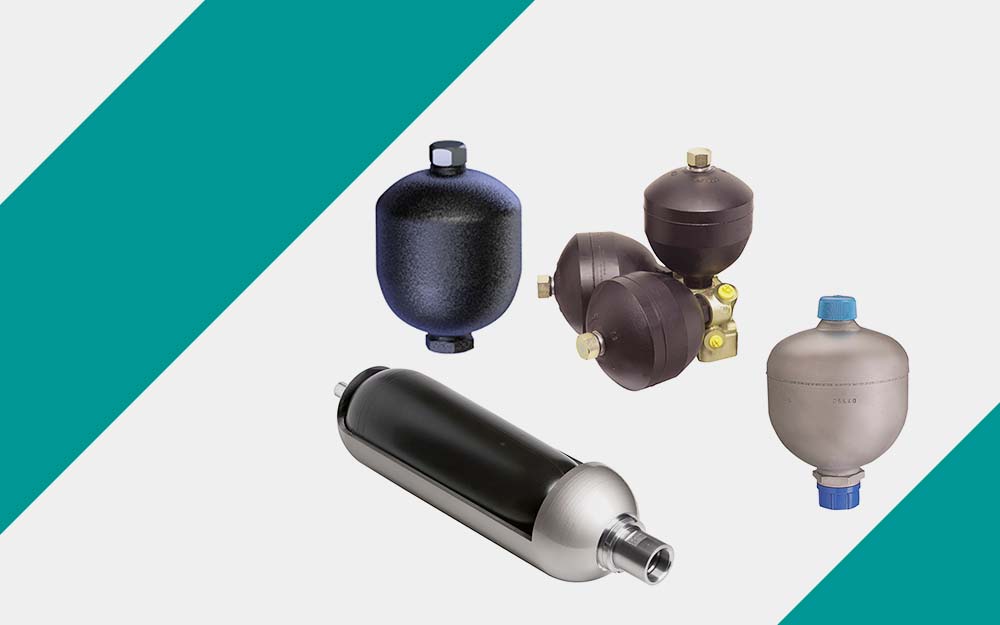Accumulators are used everywhere, ranging from off-highway vehicle suspension systems to tiny power units in the machine tool industry. They’re unique to the hydraulic realm, using their hybrid hydro-pneumatic construction to offer supplemental flow, vibration reduction and emergency energy, to name a few purposes.
Like most hydraulic components, they’re not without failure. At some point, your piston, bladder or diaphragm accumulator needs to be repaired or replaced. The most common point of failure for diaphragm and bladder accumulators are their diaphragms and bladders, respectively. Synthetic rubber has a natural shelf life, so depending on the installation period, operating temperature and fluid compatibility, rubber-based accumulators may last from months or decades. You may describe a piston accumulator as a rodless cylinder where the piston separates the two fluid media, and these accumulators may also see their rubber sealing components fail.
Very few diaphragm accumulators are repairable—manufacturers bond, weld or roll-form the accumulator permanently, leaving no room for repair. Diaphragm accumulators, luckily, are quite economical. Just as fortunate for you, Higginson stocks hundreds of diaphragm accumulators from 0.32 litres to 1.4 litres.
Bladder accumulators are common within industrial manufacturing, so replacement bladders and repair parts see high demand. Although repair shops (Higginson included) repair bladder accumulators, you’ll find it’s easy to replace their bladders in your own shop. A benefit of bladder accumulators is their universal nature; Youtube offers dozens of videos showing you the process. The downside … you need the nitrogen bottles and accumulator refilling kits. Higginson offers the latter, but you’ll need your own nitrogen.
Piston accumulators are more tricky to repair. There is no standard for the method in which a piston accumulator manufacturer seals their piston, which requires seals on both the gas and oil sides to be different. Repairing a piston accumulator requires that you either contact the manufacturer for a seal kit specific to your accumulator or tear the accumulator down to size up the individual seals. We repair hydraulic cylinders daily, so repairing piston accumulators is a piece of cake.
Once you have your replacement or repaired accumulator ready for installation, you will need to charge it with nitrogen. Nitrogen is chosen for its inert nature, making it unlikely to explode spontaneously, as could oxygen-laden air. Special charge heads using either Schrader valves or metric connections provide the interface between your accumulator and tank. These charge heads allow safe filling while providing a relief valve to bleed excess pressure down to your desired charge setting.
The charge pressure varies and should be defined on your hydraulic schematic. If the charge pressure is unknown, it may be safe to charge your accumulator 50-60% of hydraulic working pressure. For example, if you know your system operates at 3000 PSI, a safe precharge pressure is 1800 PSI. When precharge pressure is low, your performance will be sluggish. Should precharge be too high, the accumulator stores less usable hydraulic fluid.
Regardless of your need for new accumulators, repair parts or service, Higginson has your back. We stock all the typical diaphragm and bladder accumulators, as well as service parts and repair kits. And if you’re in the market for an accumulator (or the system to go with it), we can help you select and specify. Get in touch.

